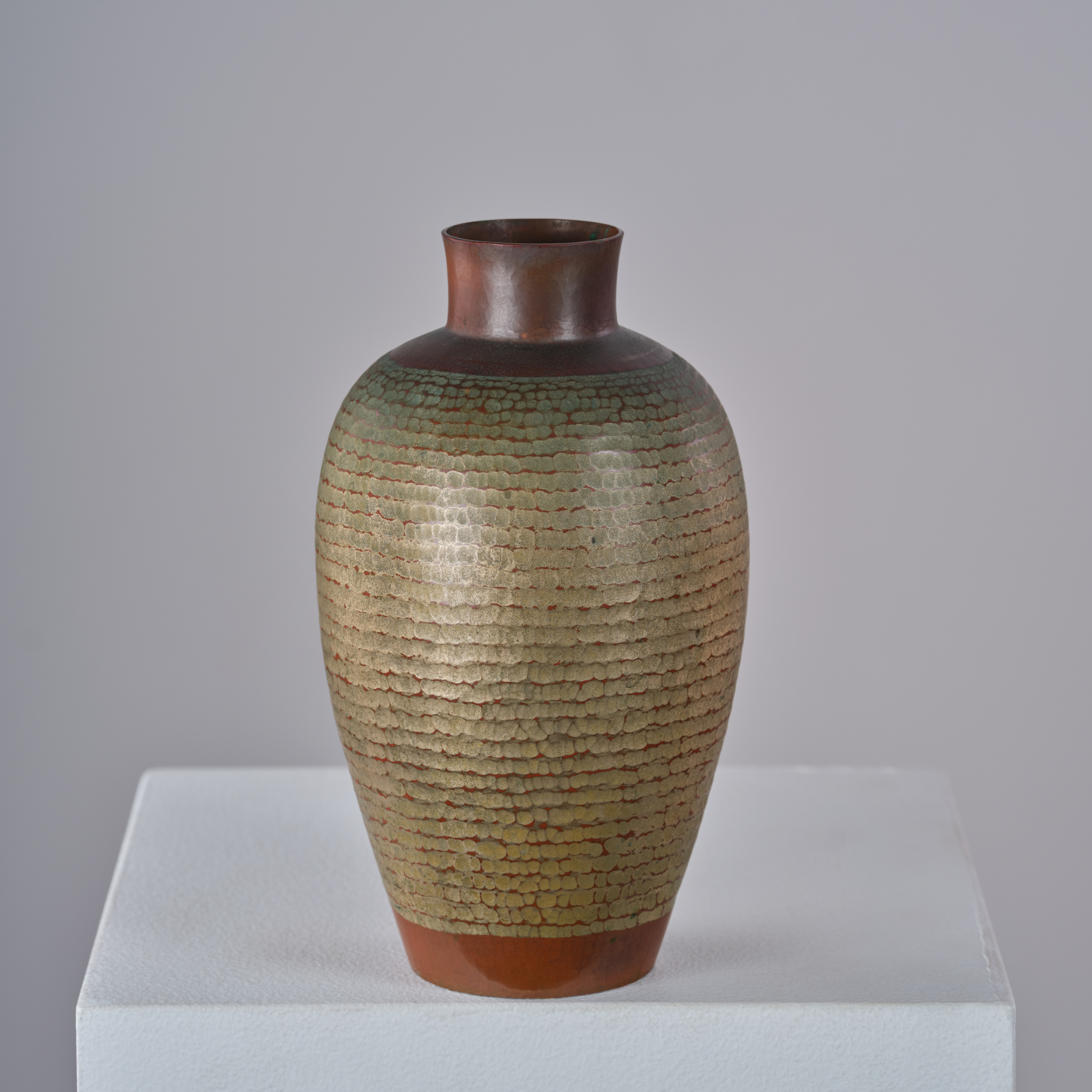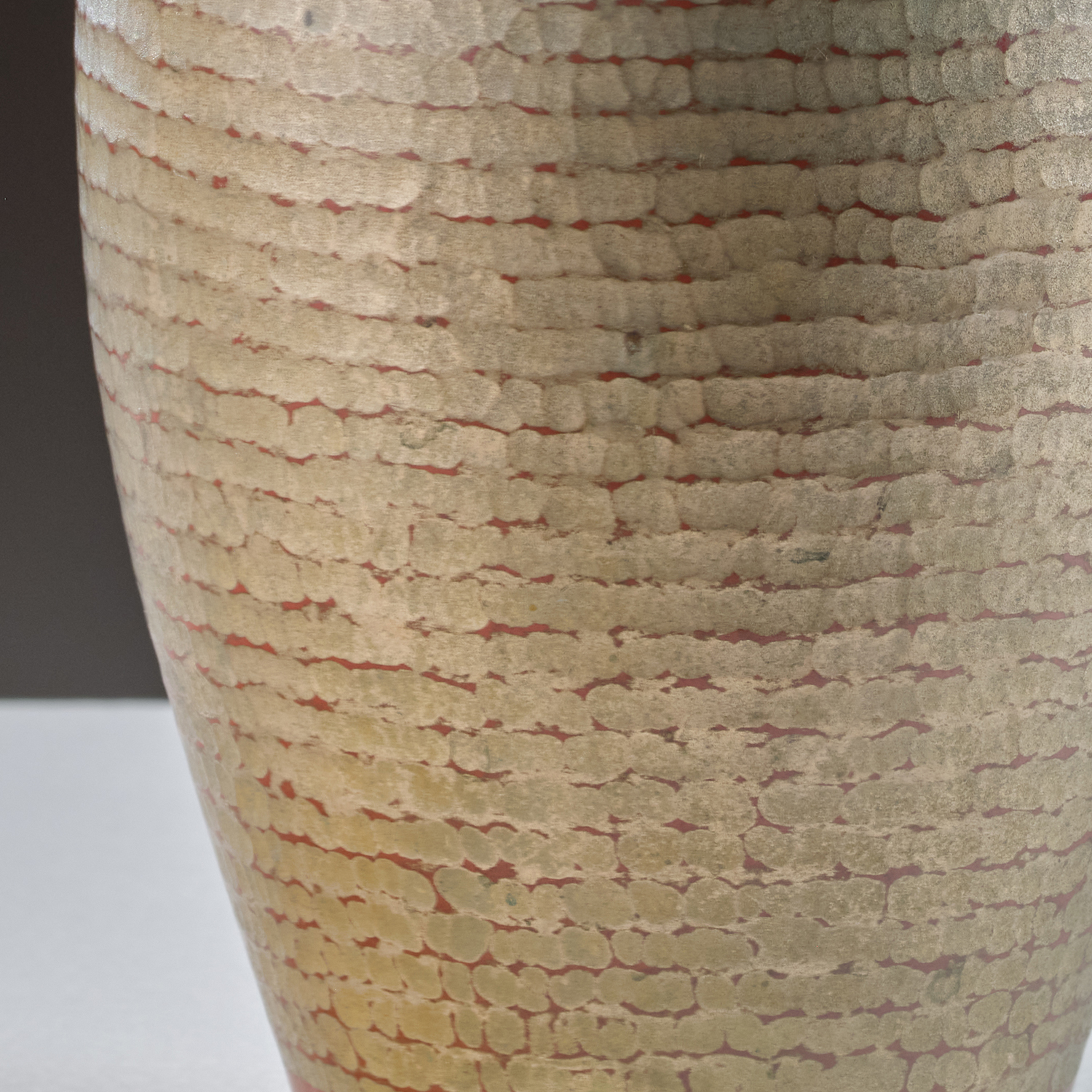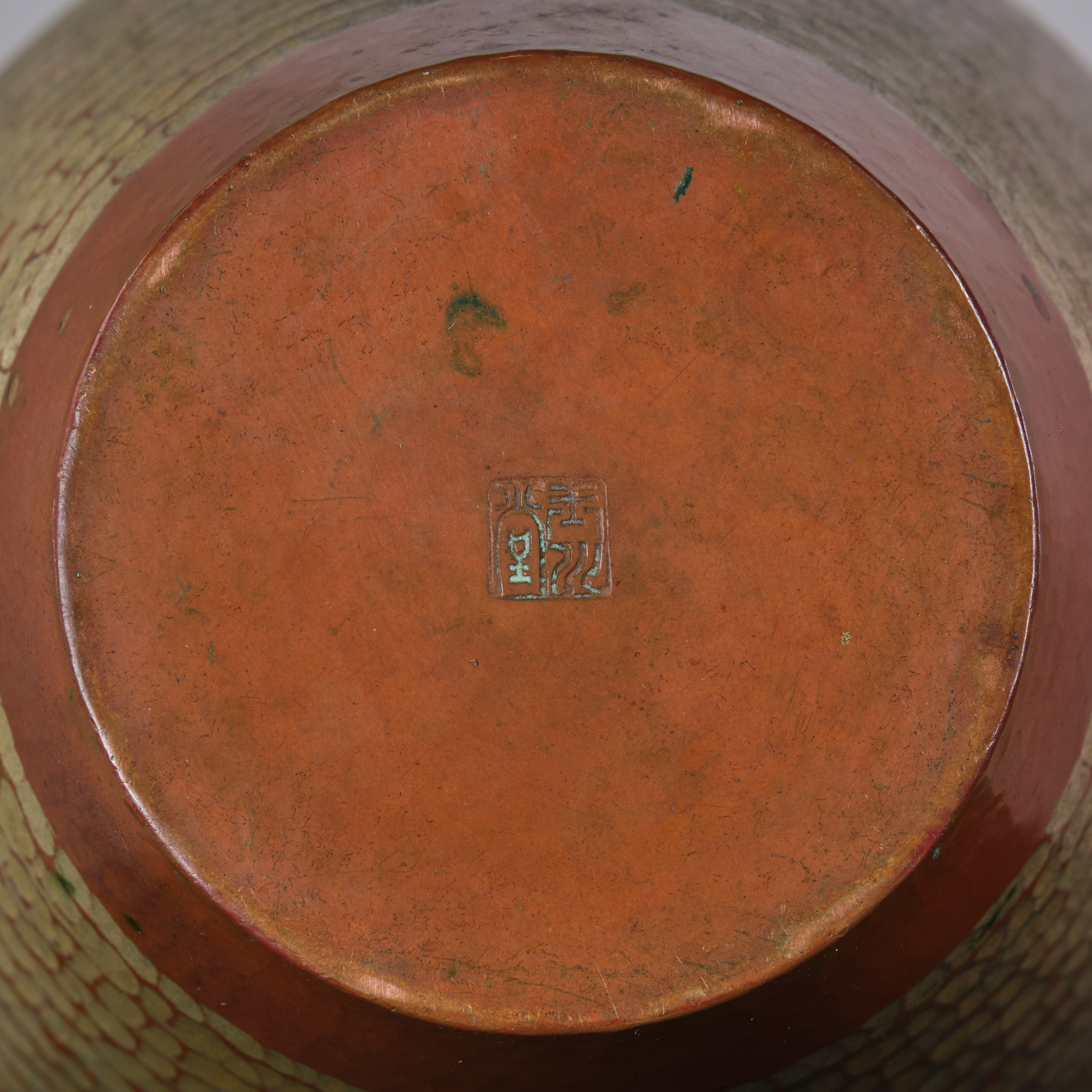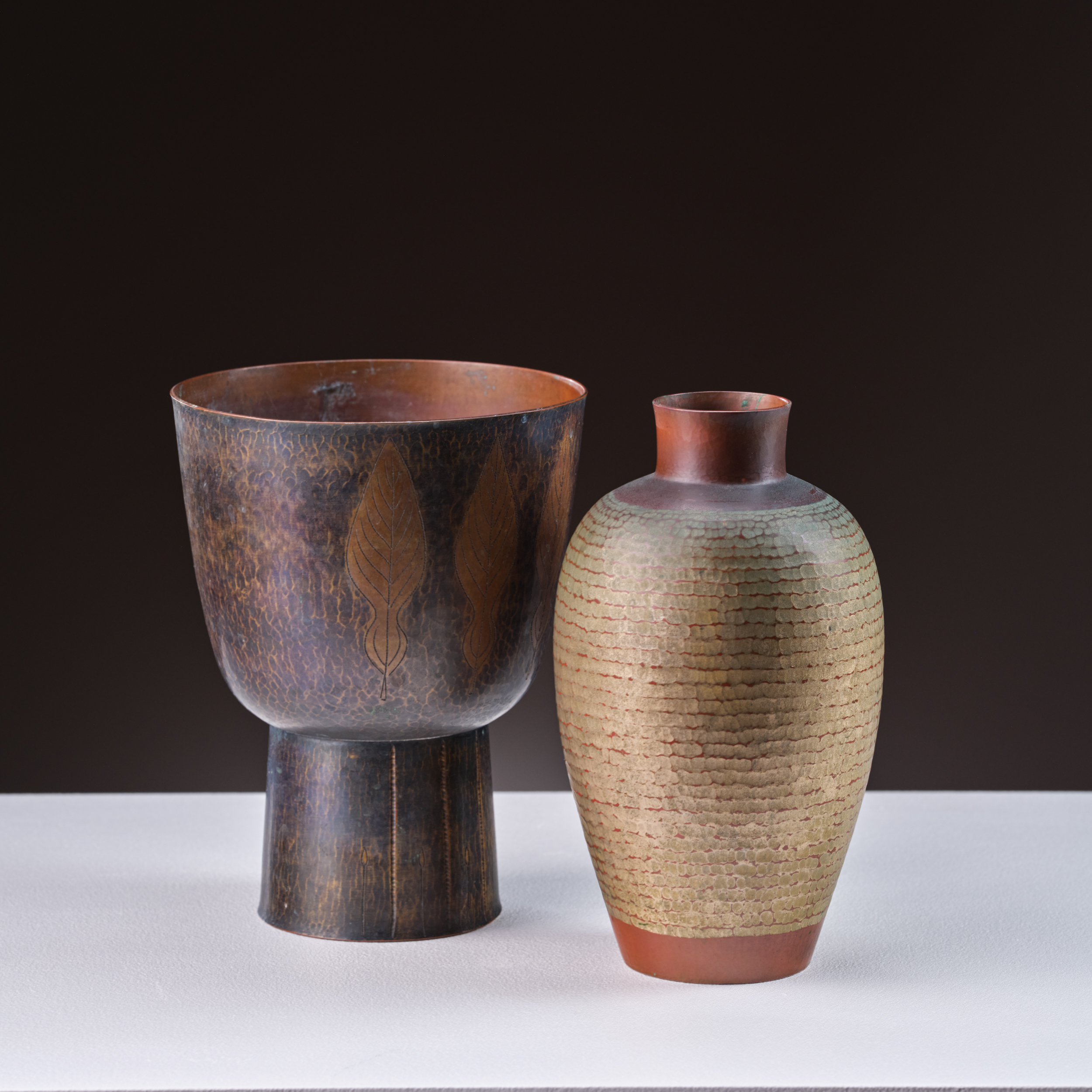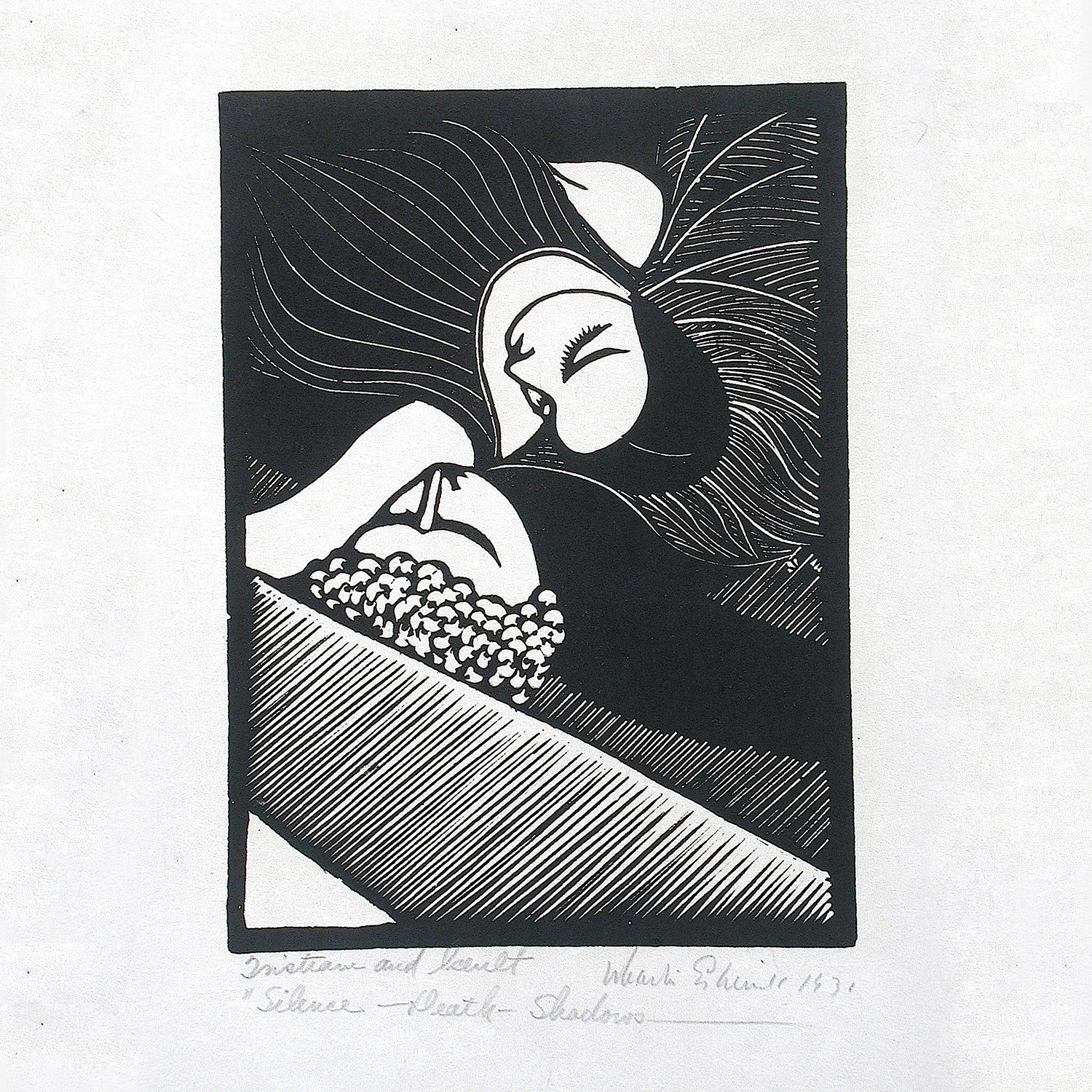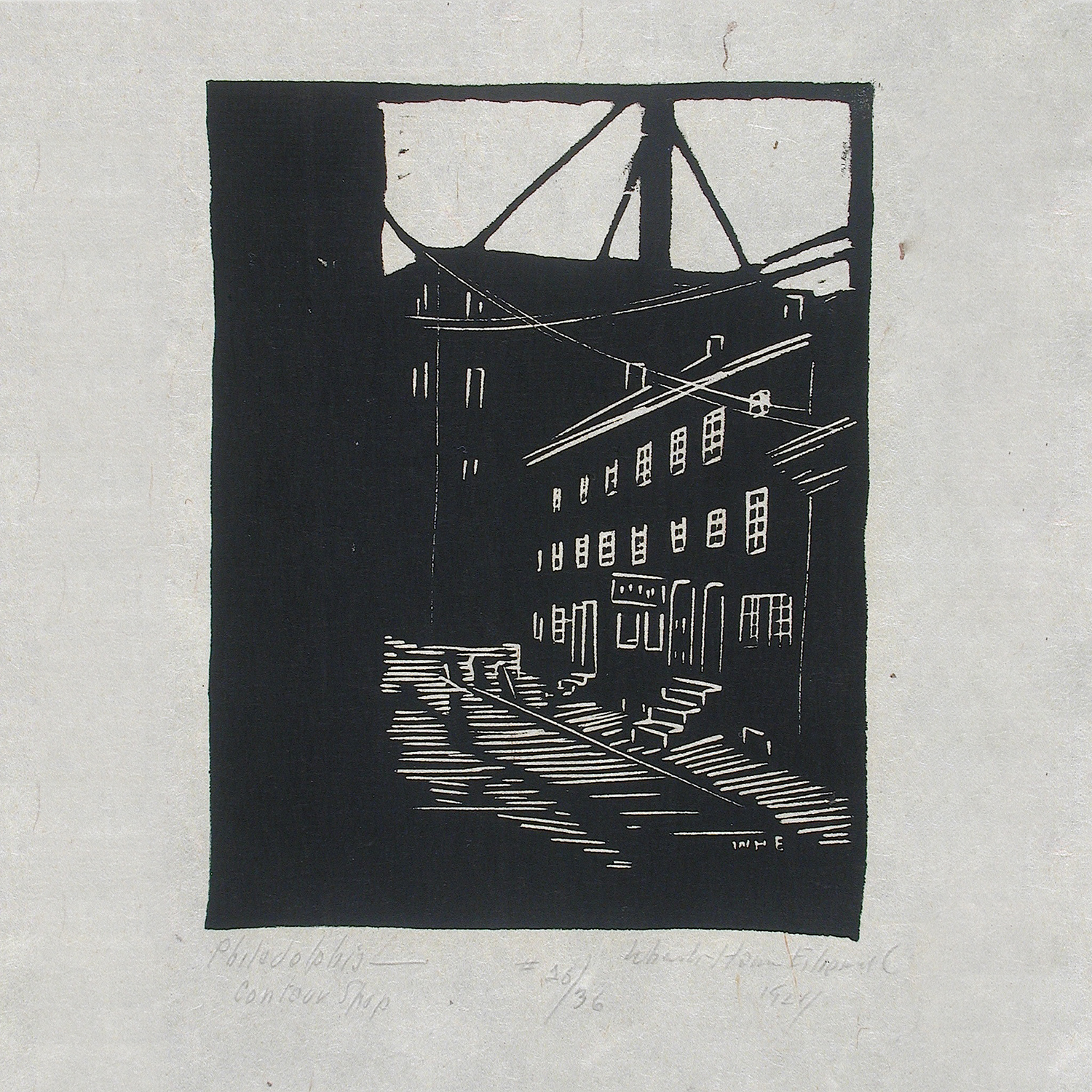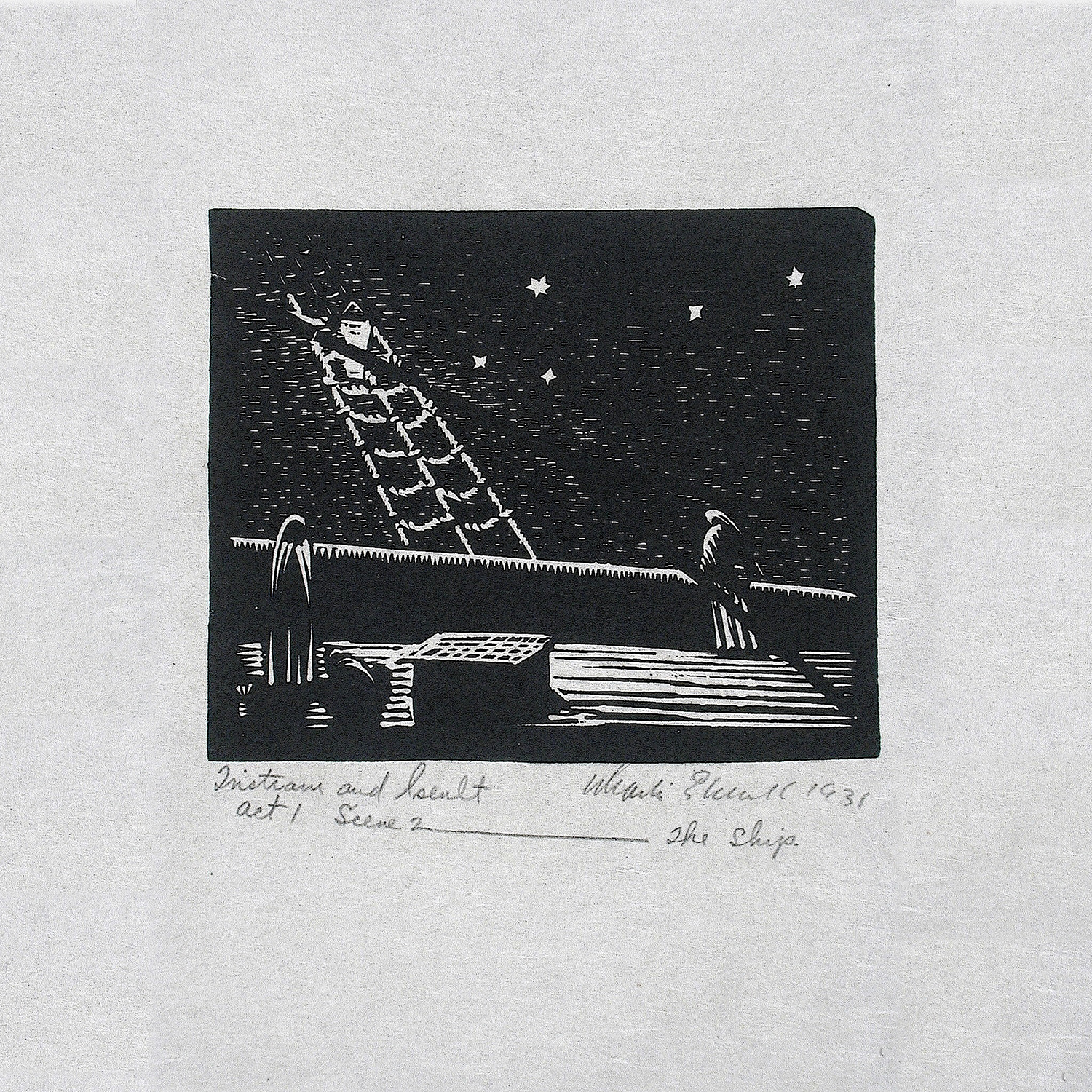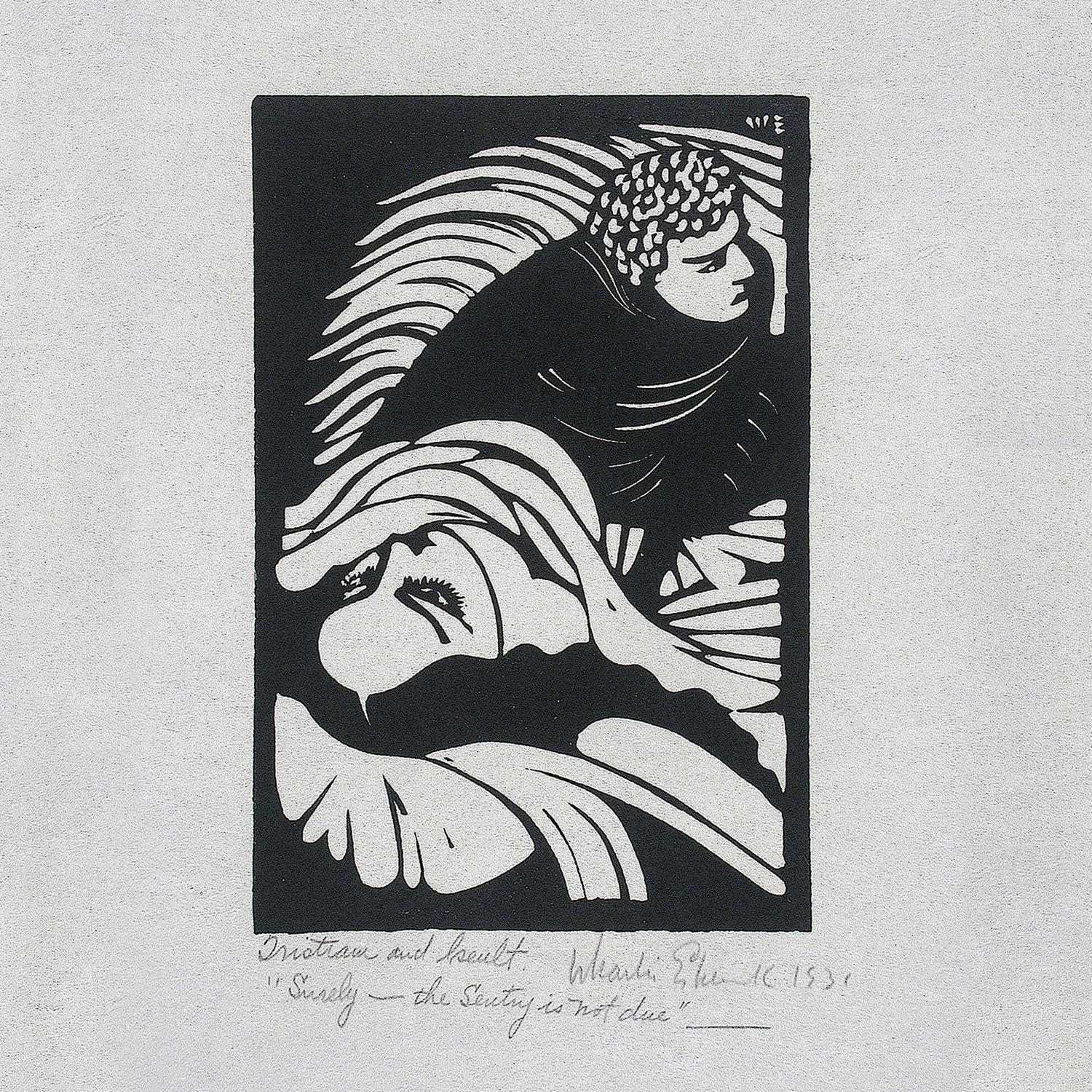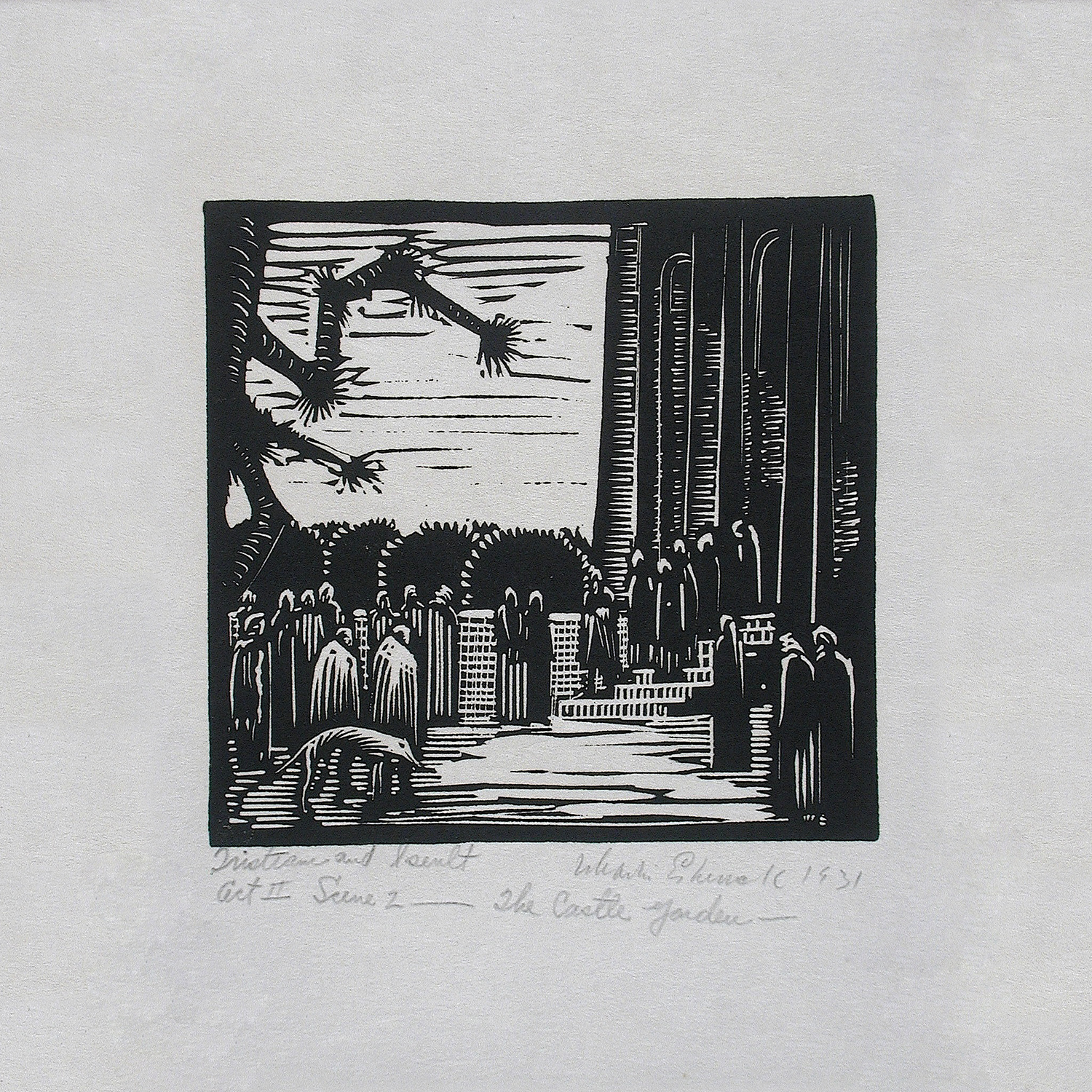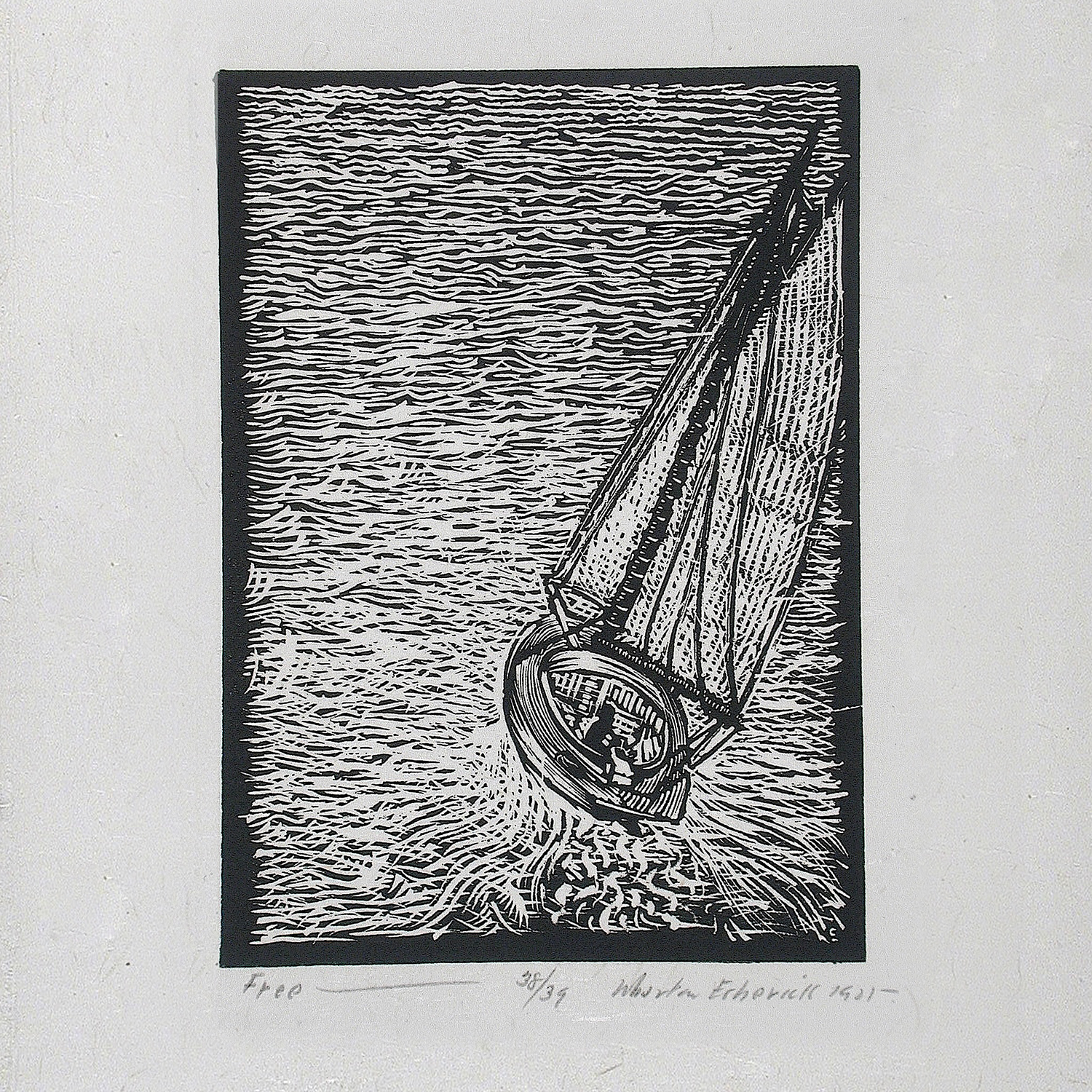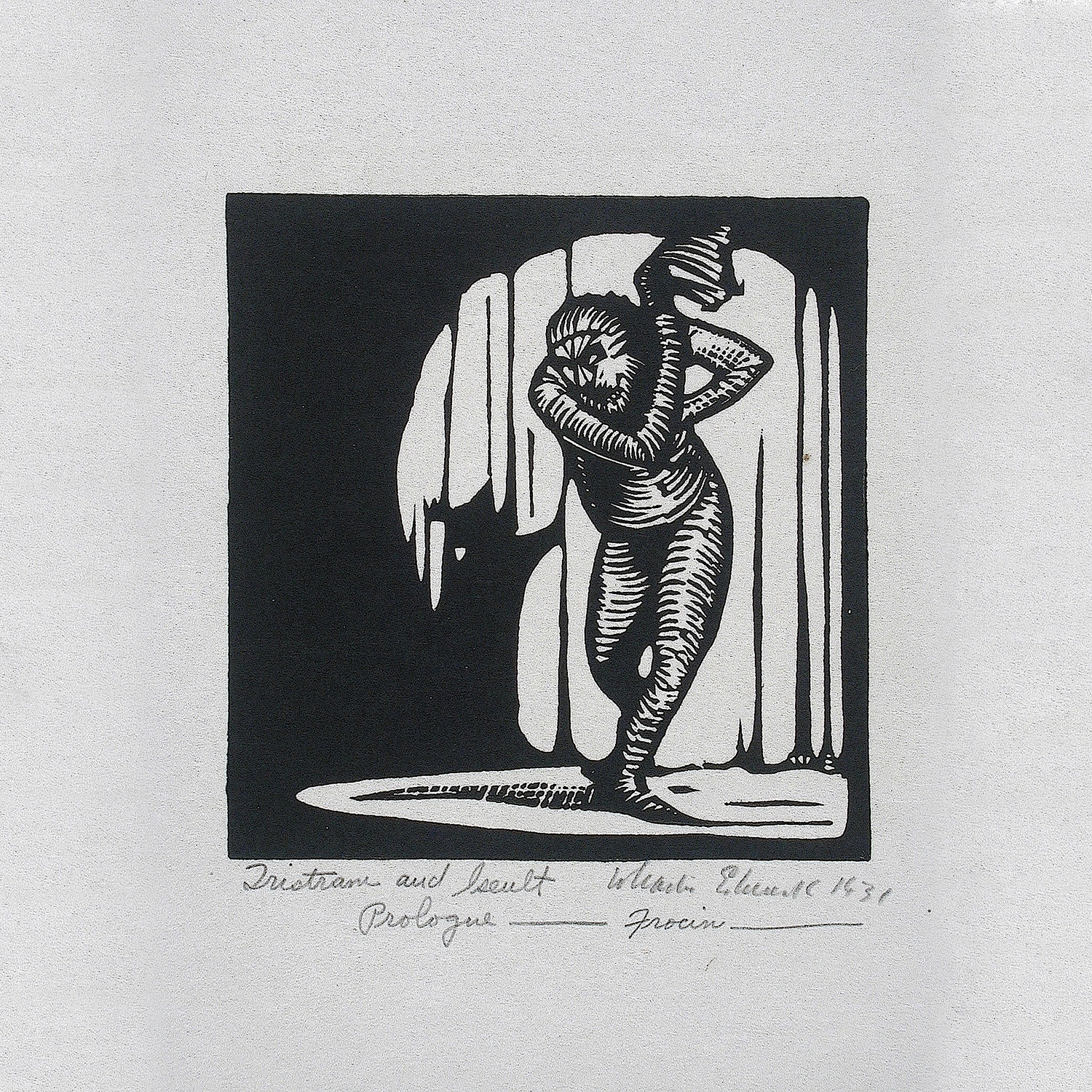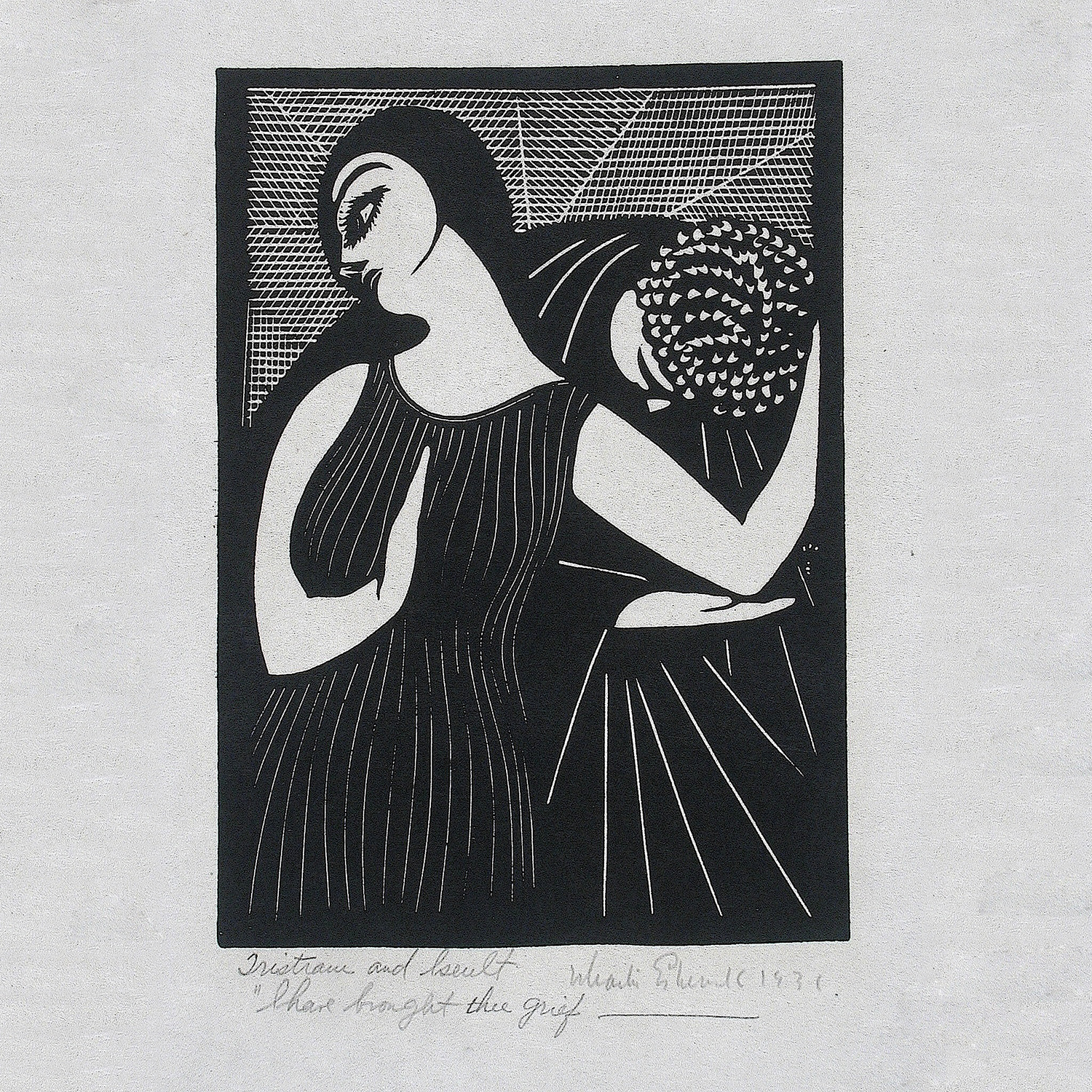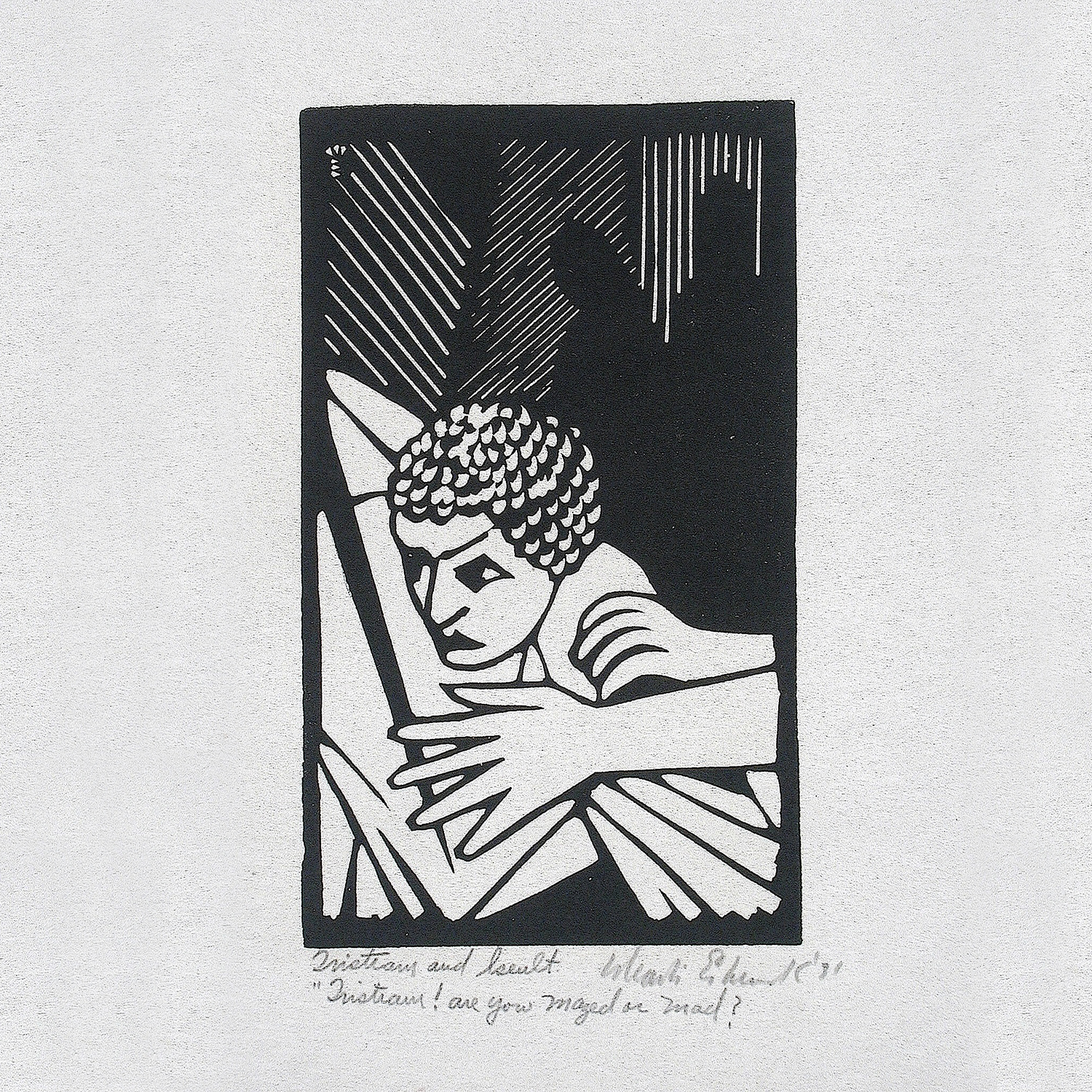No products in the cart.
Gyokusendo
Tsuiki Copperware, Shöwa era (1926-89)
Dimensions:
5 × 5 × 8.25 in (W x D x H)
12.7 x 12.7 x 20.96 cm
Material: copper, ro-iro urushi (lacquer)
The surface, referred to as “Hammer Mark Mosaic” shows the individual marks left behind by the hundreds of hammer strikes needed for shaping the vessel. Creating a texture, that cannot be replicated.
Gyokusendo Tsuiki Copperware is a traditional Japanese craft with a history that dates back over 200 years. It originates from Tsubame City in Niigata Prefecture, Japan. The name "Gyokusendo" comes from a combination of two words: "gyoku" meaning "jewel" and "sendo" meaning "copper mountain." The term "tsuiki" refers to the technique of hammering and shaping metal, specifically copper, into various forms and designs. Gyokusendo copperware is known for its intricate and delicate designs, achieved through a combination of traditional craftsmanship and artistic creativity. Artisans use tsuiki, a hand-hammering technique, to shape the copper into various forms, such as vases, tea kettles, trays, and other decorative items. The process involves repeatedly heating and hammering the copper to achieve the desired shape and thickness.
| Dimensions | 5 × 5 × 8.25 in |
|---|---|
| Artist | Gyokusendo |
| Date | Shöwa era (1926-89) |
| Style | |
| Exhibitions | Design Miami/ 2023 |
